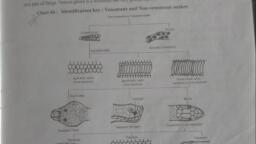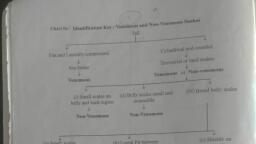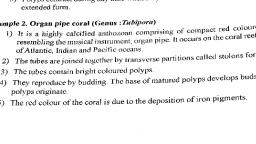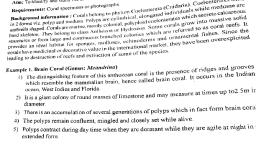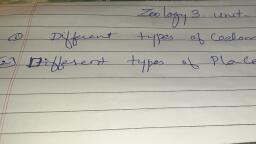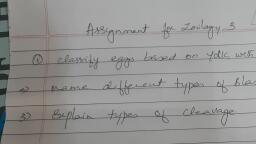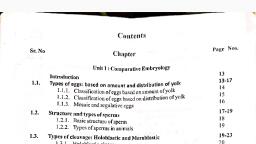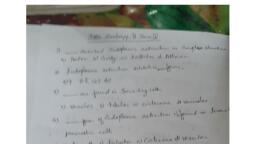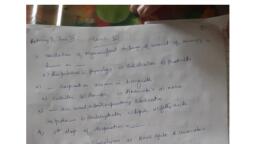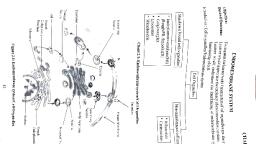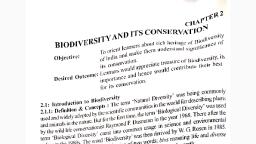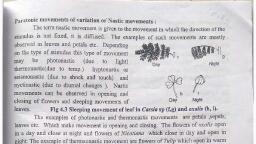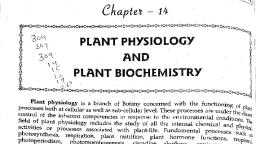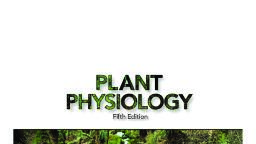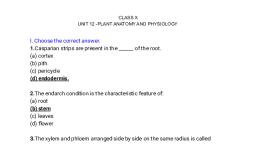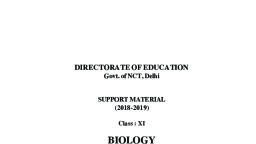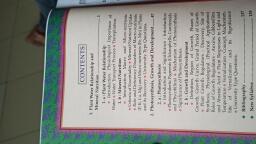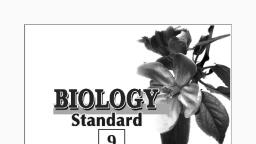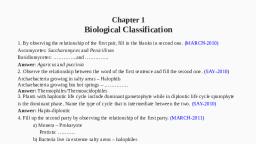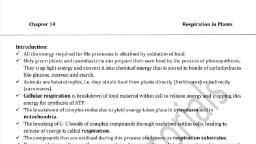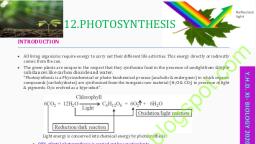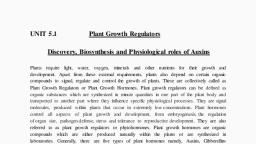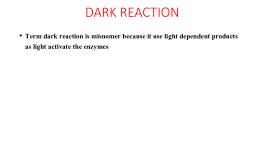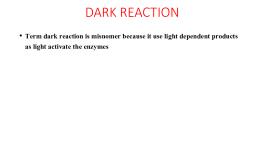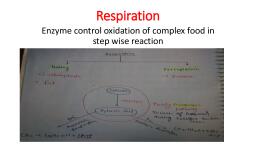Page 1 :
Chaptet - 14, , 30, , PLANT PHYSIOLOGY, , 30, , Plant, , AND, PLANT B1OCHEMISTRY, , physiology, , is, , a, , branch of, , Botany concerned, , with the, , functioning, , of, , nI, , processes both at cellular as well as sub-cellular level. These processes are under, the dirlant, control of the inherent, in, competencies, response to the environmental conditions, Th, field of plant physiology includes the study of all the internal, chemical and, , physicat, plant-lite. Fundamental processes such as, photosynthesis, respiration, plant nutrition, plant hormone functiorns,, functions, tropisms, photoperiodism, photomorphogenesis, circadian rhythms, environmental, tropisms,, stress, physiology, seed germination, seed dormancy, stomata, function and transpiration are, studied as a part of plant, physiology., sometimes, Biochemistry,, called biological, chemistry, is the, of chemical and, and, physico-chemical, substances which occur within thestudy, processes, the role, function and structure, biomolecules. The study of the living organisms. It is, of, chemistry behind the, biological processes and the synthesis of, active molecules are the, biologically, It, biochemistry. includes study of proteins, lipids,, examples of, carbohydrates, nucleic acids, enzymes,, vitamins, biochemical energetic, etc., RESPIRATION, All the, organisms,, plants, require energy for their life, oxidise this organic food including, to release, processes. They, reactions controlled by different large amount of energy, but slowly in several steps ot, enzymes. However, the, activities, , or, , processes associated with, , energy, , directly. Hence, it is stored in the form of chemical organisms cannot utilize this, This entire process is called, i.e. in the form of ATP., respiration. The organisms useenergy, their all the life activities. In other, this, words, ATP is broken down toform of energy (ATP) tor, and wherever it is, release energy whene, required to be utilized., The process of, respiration takes place in all the, , respiration. The compounds that are oxidised living cells; hence it is called cel, respiratory substrates. Usually, during the process are know, such, carbohydrates, as, or, (disaccharide) starch, cellulose, glucose, fructose (hexoses), su, However, when the, (polysaccharides), etc., are used as, tory substrates, are, carbohydrates, respiratory, substr also, serve as, exhausted, or not, respiratory, substrates., Even, available,, certain plants in certain, organic acids are used as proteins and ra i, conditionsS., respiratory subsura, DEFINITION OF RESPIRATION, as, , rose, , It is the, biological, and fats, in which, the, , oxidation of organic substrates such, organic substrates, are broken, down, , as, , carbohydrates,, P, to release, , stepwise, , enb
Page 2 :
30, Pant Biochemistry, iology &, ATP. CO2 and H2O, , ze, 2size, , 1iving, , are, , given, , out as, , by-products. This process takes place, respiration. It is representea a, , cellular, eukaryotic cell and hence it is called, , Hi2O6 + 602, , oCO2+, , OF, nALL VIEW, , 6H20 +Energy (686, , K.cal, , CELLULAR RESPIRATION, , of, , cellular, , espiration is a process, hotosynthesis and in animals,, , Kesj, , oxidation. In plants, , food, , 2870, , or, , carbohydrates preparea, ot, , them, , consumed by, , kJ or 38 ATP), , the, , as, , serves, , source, , n gp h o t, , place, is glycolysis, which takes, to, first step during respiration, dowr, is broken, during which each molecule of glucose, , e, , in the, two, , cytoplasm, , molecules, , hically, , >robi, , of, , tne, , enters, a fuel,, serves as, acid, Pyruvic, which, 1s Krebs cycle in, and FADH2, The second step, and undergoes oxidation to form NADH,, transfer, ochondria, in the electron, release their H2, u v i ca c i d ., , third step both, In the, m,, , NADH2 and, to, , FADH,, , ADP and, , synthesize ATP from, , energy, which release, Oxidative phosphorylation., , ATP is the energy, , Cess is calledenergy to cell o n demand., yides instant, YPES O F R E S P I R A T I O N, , Depending, , i, , aerobic, , availability of oxygen, , as a n, , molecule,, , rich, , oxidant, respiration, , two, , is of, , and i n, , of, , anaerobic., , types, , oxygen, in presence, in eukaryotic cells,, In the process, takes, place, Respiration: It, material takes place., oxidation of food, to form H2, in which complete, reacts with O2, , and, , Aerobic, , o n the, , inorganic phosphate.wThis, hicn, , H2, , he mitochondria, , his released from, , liberate CO,. The, the tood material to, The, to form ATP., large a m o u n t of energy, , before that it generates, nd, erepresented as follows:, , Energy (686, , +, , 6CO2 +6HO, Respiration: It takes place, , CgH206 +602, Anaerobic, nitochondria and, , O,., , In the process, , Hh is, , K.cal, , in prokaryotic, , released to liberate, , acohol and comparatively, , amount, , 2870, , or, , reaction c a n, , kJ or 38 ATP), , absence of, cells and in, but there is n o O, to, , CO2, , material takes, oxidation of food, , hence incomplete, KCept Hy, small, , overall, , place, , to, , produce, , as follows:, , Raction can be represented, 2CO+2C,HOH, , +, , Energy (50.4, , K.cal, , 210, , or, , kJ, , or, , 2, , ATP), , amount, because small, , CGH206, , of energy, , not respire anaerobically sufficient for the activities of, Higher organisms do is released which is not, tolerated by, mol.), cannot be, 50.4 K.cal. per glucosesubstances are produced which, Mrganisms and toxic, , ganisms., Difference, , and Anaerobic, between Aerobic, , t takes place, , Takes place in, , absence of molecular, , more, , Respiration, , |, , energy, , It takes place, , 1., , 4, , in, , |, , Takes, , place in, , ns,, , to, , and, heend products are C0,, Thus water is formed., , H20., , of the prokaryotic, , absence, , of molecular O., , incomplete., 3 Oxidation is less energy is released., Comparatively, , (50.4 Kcal per glucose, , released., , 686Kcal. per glucose mol.)., , most, , cells., , 2., , O2, , of complete oxidation., , tis a process, s0, in Comparatively, , higher, higher, , Anaerobic Respiration, , Aerobic Respiration, cells., in all the eukaryotic, , e, , ethyl, , The overall, released in the proces., is, of energy, , 5., , |, , CO2 and ethy, Water is no, lactic acid., , The end products, , alcohol, formed., , or., , mol.)., , are
Page 3 :
A New COursE, , s'o's, 306, continued, , for, , long, , a, , 6.lt is by- products, toxic, in, 7. It takes place, , as, , time, , cytoplasm, , mitochondria., , It involves glycolysis,, , ETS., The overall, , and, , Krebs cycle, , and, , ashort, , timejas, , tov, oxic, , 8., , It involves only, , glycolysis and, , Incomplete breakdown of pyruvic, reaction is:, 9. The overall, 50.4 Kcal., , acid, , 2CO%+2C2H,OH+, , CgH20%, , 6CO% +6HO+, , by-, , in cytoplasm, , t takes place only, required., Mitochondria arenot, , reaction is:, , CGH20%+602, , for, , lasts, It, products are formed.yri, , 7., , formed., , are, , 8., , no, , 6., , or, , 2 ATP, , ATP, 686 Kcal. or 38, RESPIRATION, MECHANISM, , OF AEROBIC, , in three stages, respiration takes place, , as, , follows:, , Aerobic, A. Glycolysis., , B. Krebs cycle., and terminal oxidation., C. Electron transfer, OR EMP PATHWAY, , a n a e r o b i c processes. i, aerobic and, to both, It is called glycolysis, It is an initial step of respiration,, of molecular oxygen., absence, and, in, molecules of pyruvic acid, place in cytoplasm, into two, of glucose molecule, German biochemists, involves "lysis" or breakdown, of the, in the honour, EMP, pathway, elucidation., also, its, called, The process is, contributed to, , GLYCOLYSIS, , asi, , common, , takes, , three, , Gustav, , and J., Embden, Otto Meyerhoff, are as, , Parnas who, , follows, , steps in glycolysis, ATP to form glucose-6-phosphate, molecule is activated by, 1. To start with, glucose, the process is called phosphorylation., , The main, , in presence of enzyme, , 2., , hexokinase,, , with the, isomerised to fructose-6-phosphate, Glucose-6-phosphate is, , enzyme isomerase., , 3., , Fructose-6-phosphate, , is, , further, , phosphorylated, , to, , form, , of the enzyme phosphofructokinase, , 6-diphosphate in presence, further broken down into, 4. Fructose 1, 6-diphosphate is, acetone, , help, , of, , fructose1, , utilizing ATP., two, , trioses, viz,, , phosphate (DHAP), 3-phosphoglyceraldehyde (3-PGAL) and dihydroxy, The latter is ultimately isomerised into 3in presence of the enzyme aldolase., , PGAL thus, the chain of conversions continues through PGAL replenished, , through DHAP., , 5. 3-PGAL is phosporylated by HPO, to form 1, 3-diphosphoglyceraldehyde, (DPGAL)., , 6. 1, 3-DPGAL is oxidised to form 1, 3-diphophoglyceric acid (DPGA) and, hydrogen released reduces NAD to NADH. (Nicotinamide Adenine dinucleotide, , hydrogen)., 7., , 1,, , 3-DPGA, , is, , dephosphorylation,, , converted, , into, , 3-phosphoglyceric acid (3-PGA) by, , generating 2 molecules of ATP., , 8. 3-PGA is converted into 2-PGA by shifting phosphate from 3C position to2, position, in presence of enzyme phosphoglyceromutase., 9., , 2-PGA is further converted into 2-phosphoenolpyruvic acid (PEP) in presence o, , enzyme enolase., , 10. The PEP is further dephosphorylated to form pyruvic acid generating t, , ore, , molecules of ATP., , Significance, and, The net gain of glycolysis is two molecules of ATP, two molecules of NADH, and, , two molecules of pyruvic acid per glucose molecule. Since each molecule of NADH2 Can
Page 7 :
A New Course in Botarny (S. Y1B.Sc.) (Sem-n, , 310, , i&y, , filled with watery fluid. The inner membrane encloses a cavity called inner, ner chan, chamber, which is filled with a granular substance called matrix., cristae, , Inner membrane, , matrix |, , -Particles, , -Head, , -stalk, -base, , -Outer membrane-, , The structure of a mitochondrion, cristae (folds of inner membrane), , matrix, , mitochondrial, outer, membrane, , ribisomes, , outer mitochondrial, , inter membrane space, , Fig. 14.3 Ultrastructure of Mitochondrion, The cristae are studded, with F-F particles or Fi, Each F, base, stalk and head., the, , particles., , consists of, Along inner membrane (cristae) and at the baseparticle, of the Fi, have electron, particles, transport chain/system consisting of hydrogen, FMN and Ubiquinone; various, acceptors like NAD, FAD,, cytochromes such as cytochrome b, c, C a, a etc., and, enzymes and coenzymes required, formation and terminal oxidation for electron transport and ATP synthesis. Hence, ATP, , takes place on cristae., The matrix consists of a, substance of fine, are the enzymes required to carryground, particles. Many of these particles, out Krebs, circular DNA molecules and a, cycle. The matrix also contains filamentous, or, number of ribosomes. Since, own DNA, it is, mitochondrion, contains, its, living cell, , self-regulating,, , self-duplicating,, Mitochondrion performs following, functions, i) Oxidation of, pyruvic acid (Krebs, ii) Electron transfer and, terminal, ATP., , ii), , It serves as, carry out various, , organelle., , cycle) occurs in matrix., , oxidation is carried out, by F, , "power house of the cell",, , particles to generate, , cellular functions. supplying energy which is stored in, ATP, to, Electron transport system or electron, transfer chain, Electron transport is the last, step of aerobic, form ATP. It takes, respiration in which energy is, place in mitochondria. The cristae, releasea, of, particles. Along the base of the inner, mitochondria, are studded, membrane, with, and at the base, respiratory assembly called electron, of, the, Fi, particle has a, composed of hydrogen acceptors like transport system or electron, and electron carriers, NAD,, transport, chain. it, FMN, FAD and, or, ubiquinone, chain is arranged in such as cytochromes b, c, Cy a and, Co-enzyme-u, order of, a. The entire, decreasing energy level. At, energy is given out which, transp, each step aElectron, combines, If all the, one, small amounto, energy is liberated at a time,, inorganic phosphate (iP) with ADP, to form Al, Actually Electron transport chainplant cells are unable to utilize it., liberated during oxidation is, functions along two, first, When H2 leaves NADH, and accepted by NAD, which routes. On route- I, the, gets reduced to form, goes to FMN, the, NAD, NADH, is oxidized, back to NAD w
Page 8 :
311, dew, , '', , Plant Bochemtat, , ne ATP, , one, to form, is, which, Ubiquinone (Co-enzyme-Q), (Co-, , FMNH. During this transfer energ, , educed to FMN, , released, , 8et, rhe H leaves FMNHh and goes to Ubiquinone, this, at, to, no sionis., level takes place, However,, CoQH., However, no significant change in the energy, into 2H, to CoQHleaves, CoQH, the latter is oxidized back to CoQ and H, splits up, H,, ed, , When, , Succinic Acid, , Fumaric, , Acid, , 2H, , FAD, , ATP, , FADH, Route I I, , NAD, , FMN, , r a l k a, , NHI, , ATP, , CoQ, ,Fes+, , ATP, , NADH, , FMNH2, , 2 Cytb, , Fe, , CoOh, 2CyiC, , 2 CyC, , ADP Pi, , ADPF P, , Fe2, , 2e, , 1/2, , 02, , Cyt a, , 2 CytC a3, , F2+, , 21, , ADP+ Pi, , MA: Schematic representation of Mitochondrial Respiratory Chain or Electron Transport, , Chain and, , Terminal oxidation, , Of these, 2H' goes to matrix and the electron pair passes through cytochromes b, c,, and as. The cytochromes are ferric (Fe*) compounds. Each cytochrome accepts, itron and gets reduced to Ferrous (Fe"). When it gives out electron, it is oxidized back, Ferric (Fe"). Then the electron goes to next cytochrome. Thus when electron pair passes, rwugh cytochromes b, c,, a and a, the cytochromes are alternately reduced and, idized and generate energy to form two more molecules of ATP, one during the transfer, electron from cytochrome 'b' to 'c and the other during the transfer of electron from, jochrome 'a' to 'a'. Thus, on rout-1, totally 3 ATP molecules are formed per H, liberated, , ating oxidation of the substrate. Hence this process is called Oxidative phosphorylation., shydrogen acceptors and cytochromes are alternately reduced and oxidized during the, , Cess, respiration is called redox reaction. On route-II, H, liberated during the, Nation of sucinic acid to fumaric acid, is accepted by FAD which gets reduced to, , ADH, When the latter is oxidized back to FAD, the H, is accepted by COQ on route-I, 8 which further transfer takes place. Thus, H, from FADH, can generate only 2 ATP, er, , ransport of H, electrons, protons and synthesis of ATP are controlled by five, , mes complexes as follows, , omplexI, , :NADH,-CoQ reductase which is responsible for passing the H, from, , plex II: NADH to CoQ., nplexII:Succinate-CoQ reductase which is responsible for, , passing H2 from, , FADH, to CoQ., nplex I v . |CoQH-cytochrome c reducase which is responsible to transfer electron, , from cytochrome b to cytochrome c
Page 9 :
A New Course in Botany (S.)YB.Se)(Sem.-, , 's'9, , 312, , for transfer of electrom, is responsible, Cytochrome c oxidase which, cytochrome a to O2., , rom, , ATPase, , Complex V, , ATP, , synthesizing system present, , or, , proton gradient, , Fo-F1, , on two, , electron, , from, , F1. hey maint, majór components, Fo, is a protein complex embeddad, of the membrane. Fo, and, , ATPase has two, , sides, , of the parhe, transferred c, , in the head, , of ATP when,H2 or, responsible for synthesis, IV in ETS:, via complexes I to, one carrier to the next one, , ATP syntetase, the, , or, , to cross the, as channel for, the inner mitochondrial menmbrane and acts, is a peripheral membrane, membrane and enter the matrix. The Fi or head piece, and is, as ATP snthetase enzynme, , H 1ons, , complex, projected into the matrix and, , inner, Drot, rotein, attacha, ched, , functions, , to Fo by a stalk., , Outer side, , ATP, , >H, , 2H, , Inner, mitochondrial, , Inner, , part, , mitochondrial, membrane, , ADP, , Pi, , Matrix, Fig. 14.5:Synthesis of ATP by Inner Membrane Particles of Mitochondiron, , Terminal oxidation, , Oxygen is the last electron acceptor in ETS. By the time electron comes at the end of, cytochrome "ag', it is deenergized and combines with oxygen which is ionised and then, combines with 2H (which have come to the matrix from the inner membrane) to form, water molecule as follows:, , O2+2e, , O, , O-+2H*, , HO, , This formation of water molecule at the end of ETS by addition of oxygen and, hydrogen is called terminal oxidation., Significance of ETS, , i), , Here O is available to accept H, which is released hence oxidation is complete to, form Hmolecule., , i) The energy is released in controlled and stepwise manner to prevent damage to, , the cell., ii) It indicates that each H, or electron pair releases three molecules of ATP. It is in, , this process that most of the energy is released, trapped and conserved, Thus, per glucose molecule, 38 ATP molecules are formed., , as, , Alr, , Significance of Terminal Oxidation, i), , The process of oxidation is completed due to terminal oxidation., , ii) As oxidation is complete, poisonous substances are hot produced., , ii) Hydrogen does not remain free to reduce aldehyde or any other useful substance, of the cel1
Page 10 :
2& Plant Biochemistry, , 313, , 9'R'R, , P y s i o l o g y& P a, , aerobi respiration 38 ATP molecules are produced per glucose molecule, as, W DeloV:, , Sequence of reactions, , ATP generated, , 2 ATP, G l y c o l y s i s ., , idation of NADH, (formed in glycolysis)., , (3 x 2), , etyl CoA formation., , (3x 2), , O x i d a, , 6 ATP, 6 ATP, , 24 ATP, , (12x 2), , Krebs cycle., , 38 ATP, , 6CO +6H,O, , CHh0%+oH0-, , Efficiency of Aerobic Respiration, is, , of 1 molecule of glucose, 686 Kcal or 870 kJ energy, glucose, have s e e n that per, rated. iHowever, this entire energy is not conserved as you, is, bond of ATP, are formed. Since, each terminal high, ATP, 38, nly, energy, 7.3 Kcal) or, 277.4 Kcal (38 x, to 7.3 Kcal or 30.6 kJ, the total energy conserved is, 1162.8, , complete oxidation, By, , ivalent, , 8kJ (38, , x, , 30.6, , only, , of 2870 kJ,, , Kcal or, KJ). Thus, out of 686 Kcal, only 277.4 cent., than any, Still it is much more, out, , 40.5, , which is, , per, approximately, nergy is conserved, machine., fuel, nmade, RESPIRATION, t, CHANISM OF ANAEROBIC, called anaerobic respiration., in absence of free or molecular oxygen is, without, Respiration, are, other microorganisms, which, 5 place in bacteria, yeast and many, iochondria., , molecules of, the process is Glycolysis in which two, step during, released., 2 molecules of ATP are, , First, med and, , acid, , are, , Pyruvic acid + 2 ATP +2 NADH2, , 2, , (6C), , Glucose, , pyruvic, , of free oxygen and, Krebs cycle, because of absence, the, enter, not, does, of enzyme, Pyruvic acid, to form acetaldehyde in presence, decarboxylated, is, It, hchondria., below:, , arboxylase, as shown, , CO, Acetldehyde (2C), , Pyruvic acid (3C)-, , reduced to ethyl alcohol by, taldehyde is further, below:, as shown, during Glycolysis,, NAD, NADH,, , obtaining hydrogen, , from, , NADH, , med, , Ethyl alcohol (2C), , Acetaldehyde (2C)-, , Enificance, , anaerobic, , respiration, , are, , alcohol., , CO0, and ethyl, molecules, as only two, , hus, the by-products of, much lesser, the process is relatively, during, Ed, compared to 38, molecule as, , per glucose, aerobic respiration, synthesized in, , Es1zed, , e, , (2, , molecules, , ATPx, , The energy, of ATP, , glucose, , of ATP per, , 7.3 Kcal, , =, , 14.6, , Kcal), , AP'x30.6kJ =61.2kJ)., NIFLCANCE OF RESPIRATION, t, , Onverts, , food energy, , into metabolically, , utilized in other metabolic processes, , ESpiration, lachine, , Sc-A New, , as, , conserves, , out, , ourse in, , comparatively, , of 686 K.cal. per, , Botany (Sem., , -, , Il &, , IV), , much, , usable fom, , molecule, , (ATP), which, , man, of glucose, it conserves, , more, , energy, , than any, , are, , or
Page 11 :
A New Course in Botany, , ST'S', , 314, , The remaining, , Sem-11l &y, , (S:¥.B.Sc.) (Sem, , energy 1s dissipated, , ., , n, cent., 7.3 Kcal) i.e. 40.5 per, (38, form of.a heat., in nature, i ., maintain carbon cycle, ure, ie. CO0,, it helps to, photosynthesis, ii) Coupled, photosynthesis,, in, utilized, respiration is, released to atmosphere during, is made use, to anaerobic respiration,, fermentation, induo Oin, in, iv) Fermentation, which is synonymous, acids, alcohol etc.,, ATP, , he, , x, , with, , preparation of a, , number of, , organic, , industries., , used as bui, and proteing, , also, during respiration are, products, v)The, like fats, compounds,, block for synthesis of other complex organic, formed, , intermediate, , vi), , It maintains balance of CO and, , Oz in the atmosphere., , PHOTORESPIRATION, , eins., , m, , In 1920, Otto Warburg observed the, phenomenon of photorespiration for the, , first time. He observed that presence of, , RuBP, , excess of O2 in the atmosphere inhibits, , Pe, , photosynthesis green algae. Later on this, inhibition was observed in many green, in, , Pi, , ADP, ATP, , plants. This inhibition of photosynthesis, due to high level of O, , Phosphoglycolate +PGA, , was termed as, , Glycerate, , Warburg effect. However, this inhibition, Glycerate, NAD, , was observed mostly in Cs plants. The C4, , plants are hardly affected by varying O2, concentration. Later on the process of, , NADH, , photorespiration was first demonstrated in, tobacco plants by Decker and To in 1959., , Hydroxy pyruvate, , Krotkov in 1963 defined photorespiration, as "extra input of 2 and extra release of, , Glycolate, Glycolate, , Serine, , CO2 by green plants in presence of light"., , Serine, , In other words the respiration is initiated in, presence of light. The process takes place in, , Glyoxylate +H,O, , Glycine, Glycine, , NH3, , chloroplast, peroxisome (microbody having, single membrane) and mitochondrion., , NADH, , CO, NAD, , Mechanism of Photorespiration, 1., , Ribulose biphosphate carboxylase, the, main enzyme of Calvin cycle, has an, ability, , Fig. 14.6: Photorespiration, to, , combine both CO,, , O (oxygenation) with ribulase biphosphate (RuBP). Hence, the(carboxylation), enzyme is cale, , 2, 3., , 4., , 5., , 6., , and, , ribulose biphosphate, carboxylase oxygenase (RuBisCO). In intense light, at l0t, concentration of CO2 (less than 1 per, cent) and increased concentration of 0, l=, enzyme brings about oxygenation of RuBP to, phosphoglycolate (2C) and PGA (3C), PGA is used in Calvin, cycle and the former is, dephosphorylated in presene, enzyme phosphatase, in chloroplast, to form, , glycolate., glycolate is then transported to the peroxisome, of enzyme, glycolate oxidase, to form glyoxylate. Thewhere it is oxidized in prest, the process is, hydrogen peroxide formE, destroyed by enzyme catalase., Here glyoxylate is converted, into amino acid, glycine by transamination reacution, presence of enzyme transaminase., The glycine is then, transported to, where two molecules ot, (2carbon each) interact to form one mitochondria, molecule, of, serine (3 carbon), one, CO, (1 carbon) and one molecule of, moE, NH3, The serine is then taken, The, , by peroxisome, it, converted into glycerate up, which, enters the and, chloroplast, gets phosphory, the series, through and, of reactio ns, , ated
Page 12 :
s'g'R, , Plant, lant )Biochcmistry, , &, , 315, , Physiolog, , PGA which enters the Calvin cycle. In the process one ATP molecule gets, f o r m, , converted into ADP,, , with the process of photosynthesis as, lat in mitochondrion that means 75 per cent of the carbon lost in, is, , dhlS, photorespiration interferes, , Thu., , one, , molecule, , ygenation of, molecule, , of, , -ecovered but 25 per cent of is lost permanently due to relcase of o n e, reduced by 25 per cent., hius, due to photorespiration, efficiency of photosynthesis is, For this reason also, there is nether synthesis of sugar nor of ATP and NADPH2., because no, Photorespiration is different than the respiration, , ides,, , (1hus, steful process., are formed, , NADPH, , during the process)., , Tor., , In C, aSes, , plants photorespiration does not, the concentration of CO% at the, , en down, , because, , occur, , enzyme, , they, , site. This, , that, have the mechanism, , happens, , intracellular, in bundle sheath to release CO, to increase, , when, , Cg, , acid, , is, , concentration of, , P, , PHOTOPERIODISM, , of Agriculture, , Department, W. W. Garner and H. A. Allard of U.S., the relative, when, Maryland mammoth flowered, , hn 1920,, , da tobaccothevariety, , length, , rterthan, , of dark, , observed, , day w a s, of, early tlowering, that, promoted, period, period. The photo, to as short day, w a s referred, , length, , of, , short day and the plant, them., were coined by, and "photoperiodism", "photoperiod", terms, to relative length, int. The, given by the plant However, it w a s, can be defined as "the response, Photoperiodism, initiation of flowering.", period with regard to the, than duration ot light, ight and dark duration, m o r e important, much, is, dark, of, period, effect. Thus, it is generally, erved that the, received can have influencing, and, of, of, iod and total quantity lighta plant to the duration and order of sequence light, by, epted that any response,, response., photoperiodic, called, types,, into three basic response, kperiods, is, classified the plants, (DNP)., Garner and Allard, Accordingly,, and day neutral plants, plants (LDP), day, (SDP),, long, .Short day plants, light period less, flower only when they get, can be, These, plants, (SDP) :, Critical day length, to species., Short day plants, from, species, exceeds the, It differs, was, , variety, , tobacco, , termed as, , If the light period, their critical day length., to induce flowering., Xanthium,, required, Nicotiana (tobacco),, ined as "the light period, remain vegetative, e.g., etc., then the plants, ical day length,, soyabean, strawberry,, Sugarcane,, worked, Dalhlia, potato,, Banner (1938), Hamner and, ISAnthemun,, plants., The, the night period., actually long night, crucial role ot, Short day plants a r e, established the, period., least 82 hours of night, plant, and, antihiunm, a short day of 15% hours and it requires at critical, day length is given, less than a, t has critical day length, period, flower e v e n if the, when light, The plant will, dark, period., plant will flower only, continuous, of c o n t i n u o u s, least 82 hours, hours of, tollowed by at, wed by at least 814, tlash of light., a brief, a brief darkness, is interrupted by, In, period is interrupted by, short day plants., if dark period, tlowering of, not flower, for, will, it, dark period, critical dark period, period; but, continuous, than their, is, l, night, that is important, c o n t i n u o u s long, a, n, , iords,, , these plants require, , iDwering., day, , 8, , flower, , plants, , critical, , (LDP), , period is, , n tperiod, the, , length, , ditters trom species, will, etc. These plants, , shorter, , Thus these, , These, (DNP) :, , light period,, , plants, , tlower, , are, , period., critical dark, than their, a, flower ofter, , length., , Day eutral plants, O, , only, , period, they get light to species,, , period, wheat, Opium,, the total light, maize, oat,, provided, a s they, lettuce, beet,, period;, plants, short night, a brief light, interrupted by, also called, , Critical day, , R, , : These plants, The critical day, , day length., , spina, Ch, radish,, ark, , more, , when, , e.g., , plants, , tomato,, , cucumber,, , cotton,, , period, , growth, of vegetative, , suntlower,, , pea,, , etc
Page 13 :
A New, , Coursein Botany (S.Y:B:Sc.), , em.-Il1&IN, , (Sem., , 316, , Above, , Above, , No, , Flowering, , No, , Below, , Below, , Fowering, , Flowering, , Flowering, Day-neutral Plant, , Long-day Plant, , Short-day Plant, , Fig. 14.7: Effect of day length of Flowering, , Critical photoperiod: From the above given classification it can be concluded that, the critical photoperiod isthat continuous duration of light, which must not be exceeded, in short day plants and should always be exceeded in long day plants in order to brin, , them to flower. There is no relation to total day length and a real distinction between SDp, and LDP, whether flowering is induced by photoperiod shorter or longer than the citical, photoperiod. The critical day length for Xanthium (SDP) is 15% and that of Hyocumue, (LDP) is 11 hours; yet the former is short day plant as it flowers in photoperiod shorter, that its critical photoperiod, while the latter is LDP as its flowers in, photoperiod longer, than its critical photoperiod. Both the, in 14 hours of light per, plants, flower, day. Thus, day, length in which the plant flowers, is no indication of its classification given, above in, absence of furtherinformation., , LmP, , Differences between short dáy and long, , Short day plants, 1. Plants, , induced, , are, , photoperiod, , length., , to, , flower, , less than their critical, , day plants, Long day plants, by | 1.| Plants are induced to flower by, day, photoperiod more than their critical day, , length., , They are also called long night plants| 2., They are also called short night, because they require dark period more, plants|, because they require dark, than their critical dark, period less, period., than their critical dark, 3. Plants fail to flower if the long dark, period., period is interrupted by a flash of light. |3. Plants are induced to flower if the dark, period is interrupted by a flash, Plants do not, of light., under the long, flower, day |4. | Plants do not flower, conditions as critical dark, the, under, period is not, day conditions as critical dark short, achieved, period s|, more than the, 5., critical dark period., Interruption of light by dark does not | 5., , inhibit flowering., , 6., , Plants, , flower in, , Interruption of light. by dark inhibit, flowering under normal photoperiod., , complete darkness | 6., Plants can flower in continuous lign, provided:, (they cannot do so under complete, darkness)., Supply of gibberellins does, not, 7., induce, in, most, flowering, cases, Supply of gibberellins induces, inductive photoperiod. under nonflowering in most cases under noi", inductive photoperiod., Short day plants tlower in, autumn to | 8., early spring period., | Long day, plants, summer period. flower in late spru, if, , 8., , can, , nutrients, , are
Page 14 :
Phyniodogy, , & Plant, , 317, , &'s'*, , Biochemistry, , Photoperiodism, or retara, knowledge is useful to commercial flower growers. They can induce, of the market., 1owering by regulating photoperiod according to the demands value,, which vegetative growth has more market, can be kept, me plants in, or, the plar of, knowledge, getative to oDtain higher yield, e.g., tubers, rhizomes, stems, etc.,the keep, , aportance, The, , oductive, , to, , obtain, , more, , flowers, , and, , fruits, , by, , using, , photoperiodism., , which, useful to plant breeders for cross breeding the plants, omally develop flowers in different seasons., ata, orcharas an, out gardens,, The knowieage ot photoperiodism is useful in laying, , he phenomenon is, anning crop patte, , in certain aeras., , planr, , HYTOCHROMES, , discovery,, , isolation, , and, , Hendricks, he early work of Garner and Allard led to the, Borthwick and, of, tissues, zation, pigment involved in photorespo, The etiolated, 959)isolate, ated the pigment from leaves and called it as phytochr, in sila, etc., are good source of phytochrome. It is distributea, and, 0at, rye, heat, maize,, Bryophytes, desmids,, of, red, and, plants, i.e., in green, nt in variety, algae, it is widely d i s t r i b u t e d in, atophytes (Gymnosperms and Angiosperms). Not only, , the, , haracterizat, , in roots, stems, iea, is, within plant itself, like, etc. The evidence, e plant world, but also widely distributed, inflorescence floral receptacles,, forms ViZ,, rea, lades and petioles), cotyledons, buds,, two, in, shows that phytochrome exists, spectra, by, ábsorption, inter-convertible., indicated, and far red absorbing form (Pfr). These forms are, sorbing form (PT), oermate, , 15, , Phytochrome Red, , Absorbing Fom (Pr), 1.0, Phytochrome Far-Red, , Absorbing Form (Ptr), , 0.0, , 800, , 700, , 600, , 500, , 400, , 300, , Wavelength in NM, , Spectra of purified, Fig. 14.8 Absorption, , solution of, , Phytochrome, , Formed through metabolism, , Pfr X, , 660 nm P f r, , Physiological response, , 730 nm, Dark revisSion, , Fig., SICO-CHEMICAL, , Ihe, , Phy, , 14.9: Recent, , view of, , PROPERTIES, , OF, , Inter-conversion, , PHYTOCHROMES, , phytochrome, with, of proteins, is a family, a, occur as, , Phytochrome, , dimer, , hytochrome proteins, molecule is, phvtochrome, of, , weight, Pigment molecules., , called the, , When the chron, the, , absorbs, , light,, , change in the, , Tesponse., , conformation, , of, , o, bU,000, , chromophore., , chromophore, , aS a, , \The, or red light responses., tly-bound pigment molecules., polypeptides/Molecular, 124 kDa polypeptides/Molecular, , the photoreceptor, molecule is, small covalently, , Ytochrome, , Pigment is, , of Pr and Pfr, , It is a, , two, eat, , linear, , a, , three covalently-attached, , tetrapyrrole., , in its structure.This, change in, portion to ithe form that initiates, protein, , there is, , of the, , wi, , a, , ght, slight
Page 15 :
A New Course in Botany (5.Y.B.Sc.) (Sem, 318, , viz., Pr and Pfr., , 5., , forms,, nytochrome exists in two inter-convertible, , 6., , Pr absorbs at a peak of 660 nm., , 7., , When Pr absorbs red, , 8., , The Pfr form is the active form that initiates biological responses., , 9, , light, it is converted to the Pfr, , form., , Pfr absorbs at a peak of 730 nm., , 10. When Pfr absorbs far red light, it is converted to the Pr form rapidly., . P f r can also spontaneously revert to the Pr form in the dark slowly over thee tim., time of, , about four hours., 12. Phytochrome levels are much higher in dark-grown seedlings than in lightgro, , plants., 13., , Phytochrome levels are highest near the apex of the plant., , 14. Pfr is also, , susceptible proteinases., , to, ROLE OF PHYTOCHROME IN FLOWERING OF SDPS AND LDPS, , Day, , Night, , Flowerng, , White light, No flowering, , Red light (R), , No tlowering, , Far-Red light (FR), , Flowering, FR, , R, , Fig, 14.10 Effect of, , night (dark), , FR, , Flowering, R, , No flowering, , interruption flowering in, short-day plant, on, , a
Page 16 :
nu &Plant Biochemistry, 319, , g's's*, interruption experiments, when, short day plant was, white light or red light (660, expo, nm),, before, as, This, , ht, , n, , the, , atural, , flash, , a, , prevented., , achieving, , is, , P e r i o, , a, , because the effect of natural, light is, and, is called light break reaction., white, If this was, to far red, light, followed given, he effect was reversed. Red and far red exposures, inosure, succe, ccession, showed, by expost, nnt response is determined by the last, ex, toperiodic response, Thus, photo, phytochrome, nverted, mediated process. exposure., On, absorbing red lignt lowly, Pfr is converted into Pr ei, in, either, rapidly by absorbing far red lignt br, four ho, Th, , e r i n g w a s, , saneI ti s, , e x n n t, , Sures, , nm), , h ep l a n t r e s p o n s, , yering)i s a, , ProCe, , about, , larkness, or far red light promotes Pr formation and, ness iniowering nin short day plants., On the contrary, red light or sunlignt promotes, s h s ., , uilates., , and stimulates flowering in long day, , and, , o r m a t i o n, , ZER, , HYTOCHROME, , ROLES OF, , plants., , photoperiodic, , from, phenomenon, many other effects of lightof uporm, prcsee, through the phytochrome system. For example, germination, lettuce, , d, , d, , are, , by red light and reversed by far red light. Stem elongation and leaf expansion, , aenced by red light. The effect of etiolation is checked by red light. Phytochronn, and bulk, in other, such as tuber, controlled, , photoperiodically, , i n v o l v e d, , processes, , ion, and dormancy., , a, , complex,, her of intermediates are found but their roles are not knowrn. The biologically acti, elicits tne, X complex which, be, nteracts with another substance say X forming a Pir., X, may, and hence called the biological trigger. Substance, response, iological, oriented A l r a s e ., NAD or some enzymatic compound like membrane, abolite likeAlP,, of phytochrome There are a number of possibilities regarding the, 1s, Mode of action, active level of lPir. XJ, reactions once the, show that, , cent studies, , Recent, , ation, , the conversion of Pr to Pfr and Pfr to Pr is, , more, , physiologically, , of physiological, , lished:, X], a) The complex |Pfr., , metabolic, , which catalyzes some key, may be an enzyme, of X, the, and the chemical nature, on the ratio of Pfr to Pr, processes. Depending, reactions., a variety of, catalyze, X], may, |Pfr., trigger, biological, , COOH, , CHs, H-C, , H, , COOH, , CH2, , CA2, , CH2, , CH2, , C, , HC, , CHs, , H,C, , HC, , N, H, , H, , -, , Fig., , 14.11:, , that, , --J, - PROTEN, , Chromatophore, , phytochrome, , ofPhytochrome, , activates specific, (enzymes)., , genes,, , hich in turn, whic, , He with, , his, , and, :, proteins, protein synthesis, of n e w, in RNA, protein, i n c r e a s e in, synthesis, recise mechanism of, an, the, i n v o l v e d in, Participates in, t i s s u e s . The pre., is, in plant, that p h y t o c h r o m e, enzymes, specific, several, have, p n y t o c r o m e have, of phytocrome, t,, formation of,, the, specified., of, not, movemen occurs due, minutes, This, 8ene activation is, within the, plant., that Pfr, M i m o s a pudica, It is suggested, which, , lohr, ) Hans Moh, , believes, , found, , excitation, , movemen, , he, , associates, , occur, , hsponses, , shudied, like, Ike, , m, , of, o, , v, , e, , m, , e, , n, , of, , t, , cells, , ecial, anges in the special, ce, , leaves, , found, , at, , the, , base, , of the, , leaves.
Page 17 :
A New Course in Botany (S. Y.B, Sc.) is., , P'R'g, , 320, , (Sem-l, , Plant Physiology, , movement, , modifies the, of thé cell membrane,ithus altering the water, permeability, ia, out of these cells. It is suggested that the protein component of phýtochrome is n, and, the cell mbrane and, of the protein is changed following, , phytochrome., , excita yart, , the conformation, , excitation, , expc, , rese, , o, , he phytochrome not only influences the plasma membrane but also influe, , embranes of the nucleus and mitochondria, thus influencing the, , metabolism of thes, , cel., , origen:Sachs in the 19th century was probably the first person to suppo, , port the, that "flower-forn, substances" are present in the flowering plants. He obserus deg, ormingeaf cuttings from flowering Begonia plants produce adventitious shoots which, flower, where, , quid, , vegetative plants regenerate only ve, shoots. After the leaf cuttingsof prepared, discove, photoperiodism, the idea was conceived that the lea, the receptors of, and, photop, operiod so it became obvious that leaves are the site of sn, of flower, forming ostance from where this substance is transterred to the meri, where flowering is induced. When all the leaves are removed from the plant,, does not flower, but even if a single leaf is kept on the plant, the plant flowers.the plant, In 1, from, , Chailakhyan proposed that the signal generated in the leaf is, , nature and named it, , unknown., , florigen. However,, , a, , substance of, , exact chemical nature of, , horm, , tlorigen monal, ic, sll, , Petk, requ, , VERNALIZATION, Not all the, will flower when, plants, subjected to the correct photoperiod. In man, plants low temperature has a, effect, on flowering. In annual, profound, takes place in, plants, floweri, summer so effect of low, light for annuals. Biennials, on the othertemperature on flowering is secondary to thatering, hand, remain vegetative in first, and, after, growing season, prolonged, to the cold, exposure, of winter, flower in, season. Without, temperature, the, to, exposure cold treatment, these, followino, The, remain, plants, of low, importance, vegetative, in, the, indefinitely, temperature, as in 1918, induction of flowering was, by Gassner. The, established as earh, is known as, phenomenon, defined, vernalization. Chourad (196, vernalization as "the acquisition or acceleration, of the, chilling treatment.", ability to flower by a, , and, vern, , requ, , Greg, , of co, , calle, not, , belo, , not E, , Characteristics/Mechanism, of Vernalization, It, , treat, deve-, , must be, , that plant exhibit, vernalization emphasized, by showing actual initiation inductive, type, of flower, temperatures and not at, , of, , The, , response to, at high, primordial, the, , vernalizing temperatures, thus action of, inductive and it is called thermo, induction., chilling is, As a rule winter, annuals, can be, and, as imbibed, perennials plant should attainvernalized, seeds whereas, Generally, vernalization is the slowparticular size before giving treatment.biennials, temperature is required to induceprocess. Usually 1-3 months, exposure to lo, temperature treatment of 1 -2 days. flowering; but celery flowers, by, is, Vernalization, more, , low, , the, , How, , can, gibbe, stimu, , gibbe, , Applications, Vernaliz, , 1., , Thus, mc, quantitative, ie., effective, the, longer, Usually 1°C to 5°process, C, treatment, t 2 Sowing, Vernalization stimulus is, temperature is foundchilling, to be more, cereals irr, it is., , perceived, vernalization treatment should, ettecave, only by actively, be, with meristematic, to, dividing, cells., given, tissues like flower, germinating seeds or to wholeHerploa, Presence of oxygen, promordia., and water is, is, respiration, required, prerequisites for seed vernalization. erobic, while dry seeds cannotfor, vernilization., be, Similarly only imbibed seeds are Aee, Petkus rye (Secale cereale) vernalized., sei, spring variety is a typicalhas twO varieties, spring, annual rosette, The winter, variety and winter, tyThe, is a, plant, flowering, varie, first growingvariety, typical, in one, season and then biennial rosette, plant,, growinst, in, flowering next, remaining vegetann, growing, season after a, pr, , 3., , 4., , Vernaliz=, , Vernaliz=
Page 18 :
ology &, , Plant Biochemistry, , 321, , g'R'R, , Plysiolo, , the cold, resembles the spring variety., , osure, , to, , temperature, , when, of winter. The winter variety,, , lized,, vernal, , Fig. 14.12: Petkus Winter rye, , it has facultav, stage and, can be vernalized at the seed, in 15 wee, rye, Winter, it flowers, vernalized,, the, not, if, even, for vernalization, i.e., this variety,, requirement, words, in, other, it flowers in 7% weeks. In, not a b s O l u e, a n d if it is vernalized,, and it is, flowering, of, time, shorten the, vernalization serves to, Petkus, , the effect, , requirement., , (1937), Gregory and, treatment, may be, of cold, Purvis, , that, Petkus winter rye, first demonstrated in, This phenomenon, , 1s, , is, by high temperature., devernalization, noticed that, further, be, must, It was, however,, called devernalization., cold treatment given, vernalized plants. So the, treatment must, in optimally, not possible, the high temperature, two, , reversed, , between the, requirement. Secondly, time gap, below the optimum, the cold treatment. A, after, immediately, and the subsequent, treatment, not be given, of chilling, stabilizes the effect, treatments, , devernalization is prevented., , cells is, the actively dividing, some, , named, , as, , vernalin., , received by, plants cold, In, T h e stimulus, and identified., isolated, level of, not been, observed that endogenous, However, it has, has also been, It, that the, gibberellins., Therefore, it is suggested, can be replaced by, vernalized plants., mixture of, enhances in, gibberellin or a, particular, gibberellins, a, be, could, stimulus, , of, , treatment, , vernalization, , gibberellins., Pplications o f Vernalization, , Vernalization, , lhus,, , more, , Owing of, cereals in, , can, , the, , help in, , than one crop, winter crops, , severe, , ernalization, , shortening, obtained in, c a n be, , in spring, , season, , winters., , emalization helps, , to, , period, , remove, , the kernel, , resistance, , a, , between, , germination and, , flowering., , avoid, , killing of, , year., vernalization, , can, , after, , wrinkles, , and, to cold, , increases, , g'9'9, , inTriticale., , diseases, , increases yield,, and also



